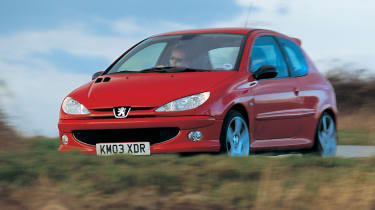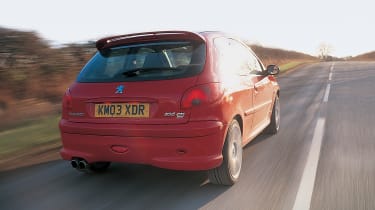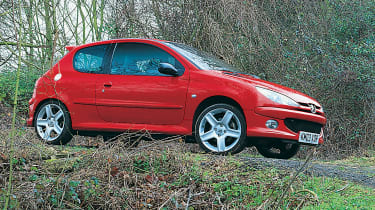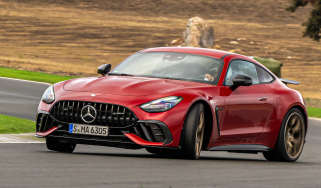Peugeot 206 GTi 180 – the car world's greatest misses
Late to the party and betraying its heritage, the GTi 180 marked the end of Peugeot’s hot hatch highs
It may seem unfair to single out a four-star evo car for the Greatest Misses treatment, but that’s exactly what I’m about to do with the 206 GTi 180. Or perhaps this is more of a criticism of Peugeot’s corporate ethos of the era, rather than its products, for while there were elements to be admired, the fact remains that the 206 GTi is largely a forgotten car.
The GTi 180 was the first performance car I ever wrote a road test of, while starting off my career at a well-known British motoring weekly. As a hardcore Peugeot Sport fan I still recall the feeling of bitter disappointment, verging on a sense of betrayal: ‘half-hearted and too late’ was the overriding impression.
> Honda S2000 – the car world's greatest misses
The 206 GTi came along in 1999 and was born in a time when the Lion could seemingly do no wrong when it came to building small, entertaining driver’s cars. Consider that it still had in its range both the 106 GTi and 306 GTi 6 and that it was only five years since the 205 GTI had gone off sale.
Enter the 206. In its standard guise it was hugely successful, its curvy, feline/feminine form an immediate hit with buyers. But that aesthetic was much less successful when applied to a performance derivative, WRC car aside. The MPV-like front end – creating an almost mono-box overall design – and cartoon features were uncomfortably limp when compared to the sharp, athletic styling of before. But that wasn’t the real problem.
An everyman GTi model came first, with a 2-litre 16v engine producing 137bhp and 140lb ft of torque. It was well-specced and possessed a ‘wonderfully compliant chassis’ according to Mr J Barker in evo 010, but he also highlighted its ‘slight aloofness’ dynamically and commented, damningly, that ‘Peugeot could learn a thing or two from what Lotus has done with the Proton GTi’s suspension.’ Moreover, the driving position was terrible, the seats woeful, and the Ford Puma easily clinched the group test win four issues later.
The 180 was meant to put all that right, but Peugeot delayed far too long, not launching until 2003, by which time cars such as the Renault Sport Clio 172 (soon to be 182) had completely redefined the potential of the small hot hatch.
The 180 wasn’t a bad car. It claimed some feisty numbers (180bhp, sub-7sec to 60mph), but they felt optimistic in reality, despite its newly acquired variable valve timing. It handled tidily, with plenty of grip, but the ride was firm on 17-inch rims that looked aftermarket in the way they bulged unnaturally out of the bodywork, and the heavy steering lacked that vital sense of connection.
Peugeot had deliberately pursued a more grown-up experience. Speaking on the car’s launch in France, senior execs seemed determined to distance themselves from their heritage, convinced that’s what the market wanted. But history would prove that to be a mistake. Peugeot’s hot hatch credentials never truly recovered.
Looking back now, all I really recall about the 180 is its supportive but weirdly squidgy bucket seats. But it was a car that seemed destined to be forgotten from the very start. ‘The new 205 GTI is already here,’ summarised Jethro Bovingdon at the climax of his 208 GTi 180 versus Clio 172 twin test. ‘It just happens to be built by Renault.’
This story was first featured in evo issue 323.







